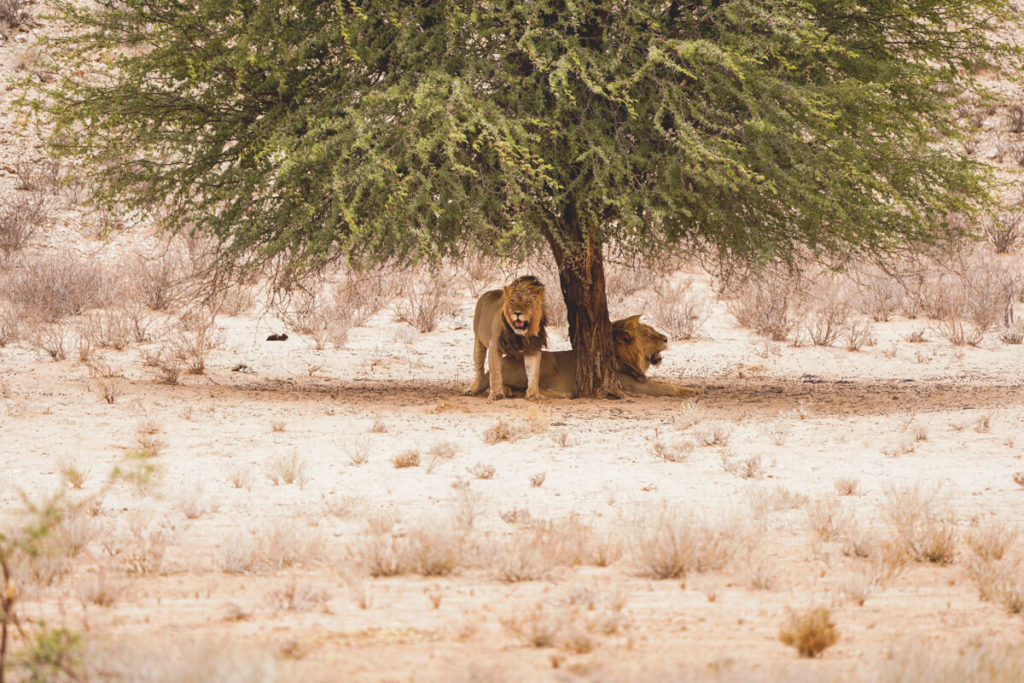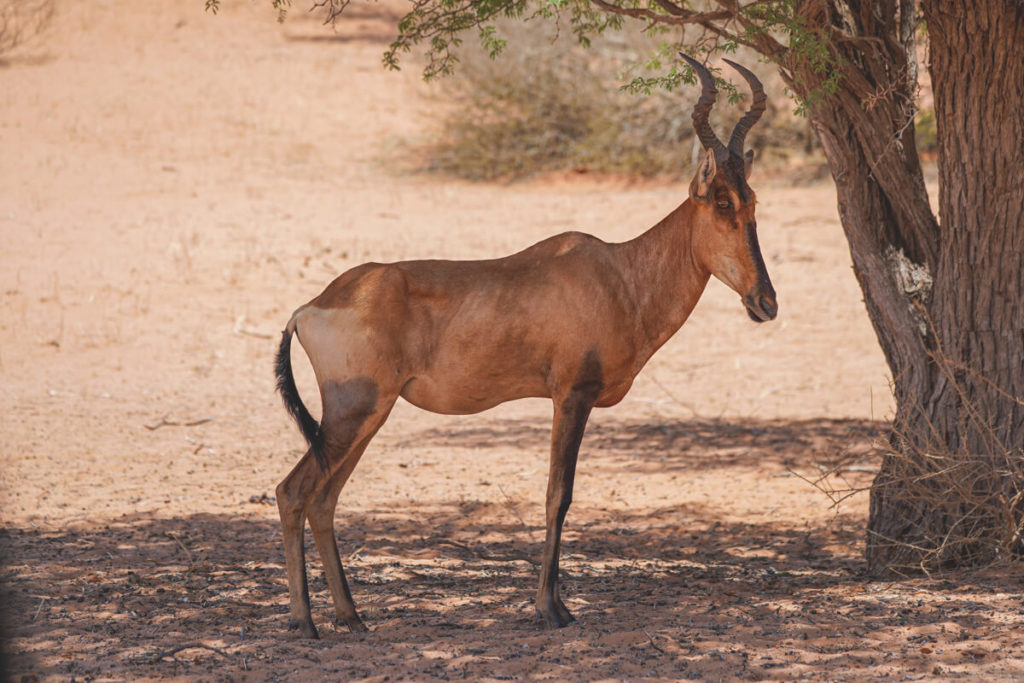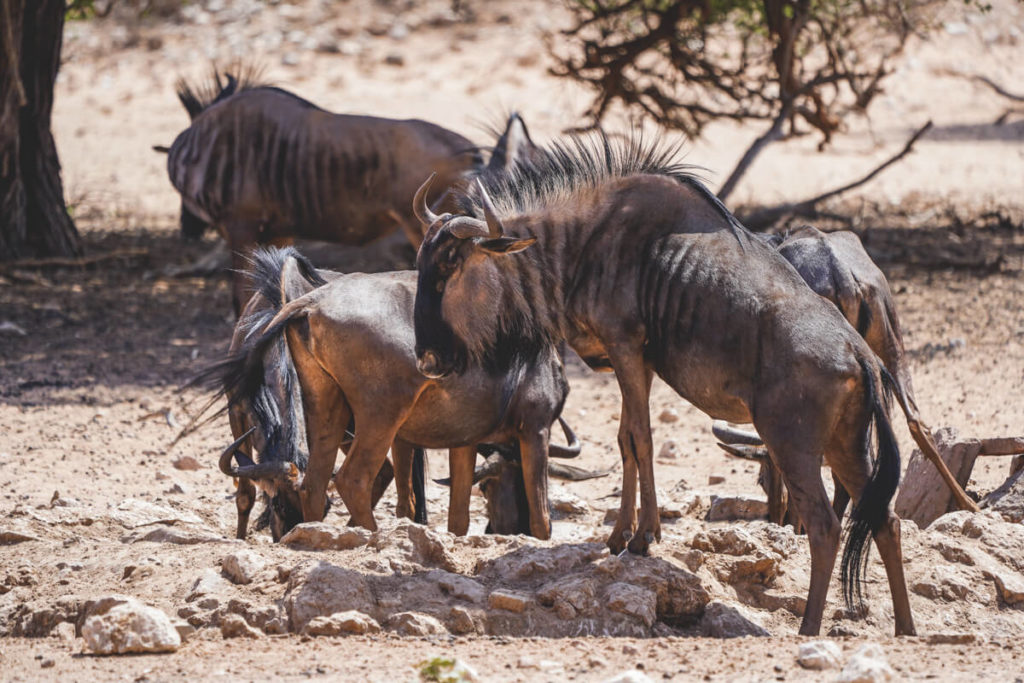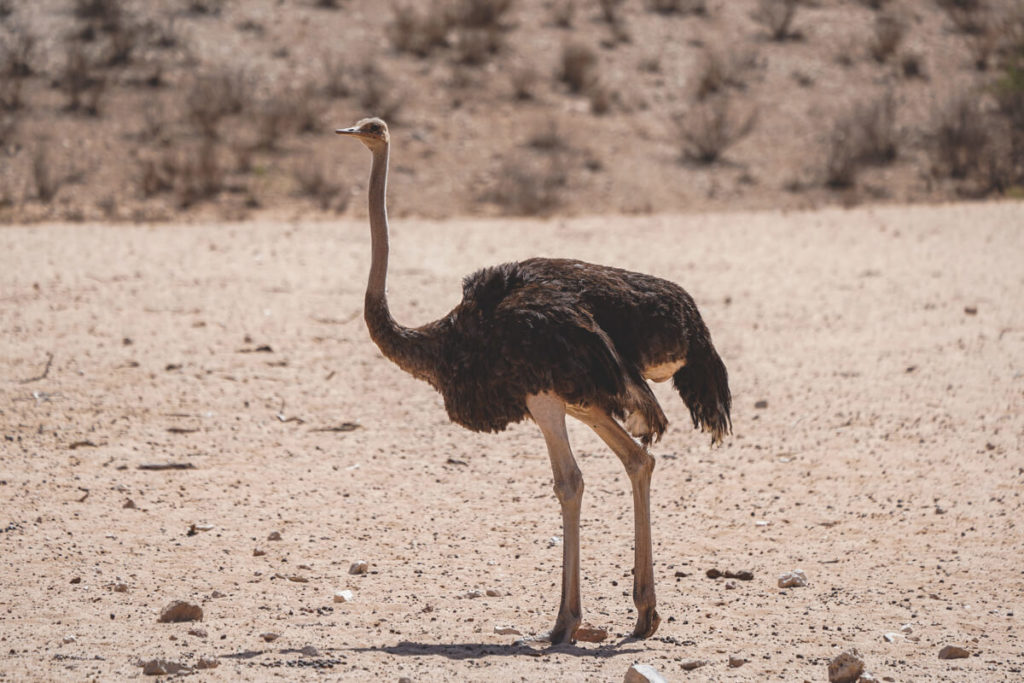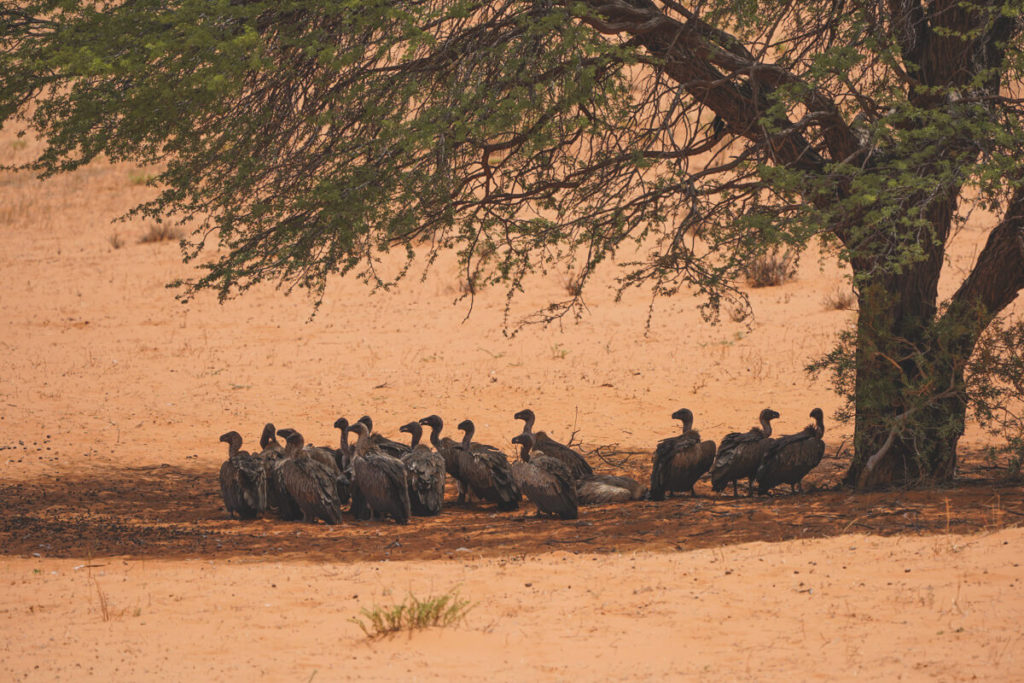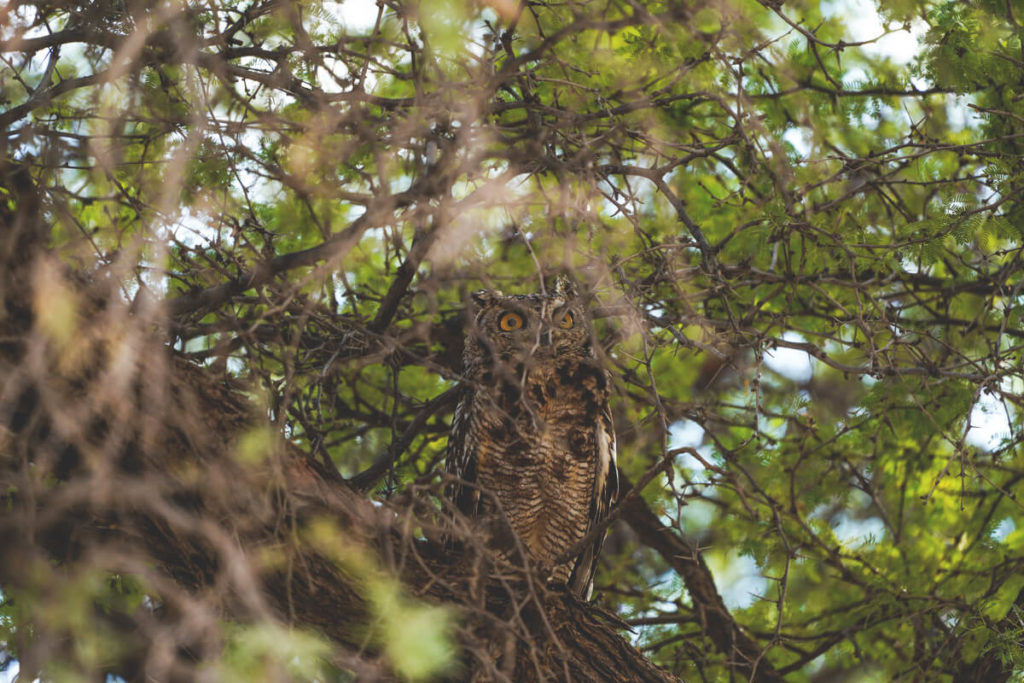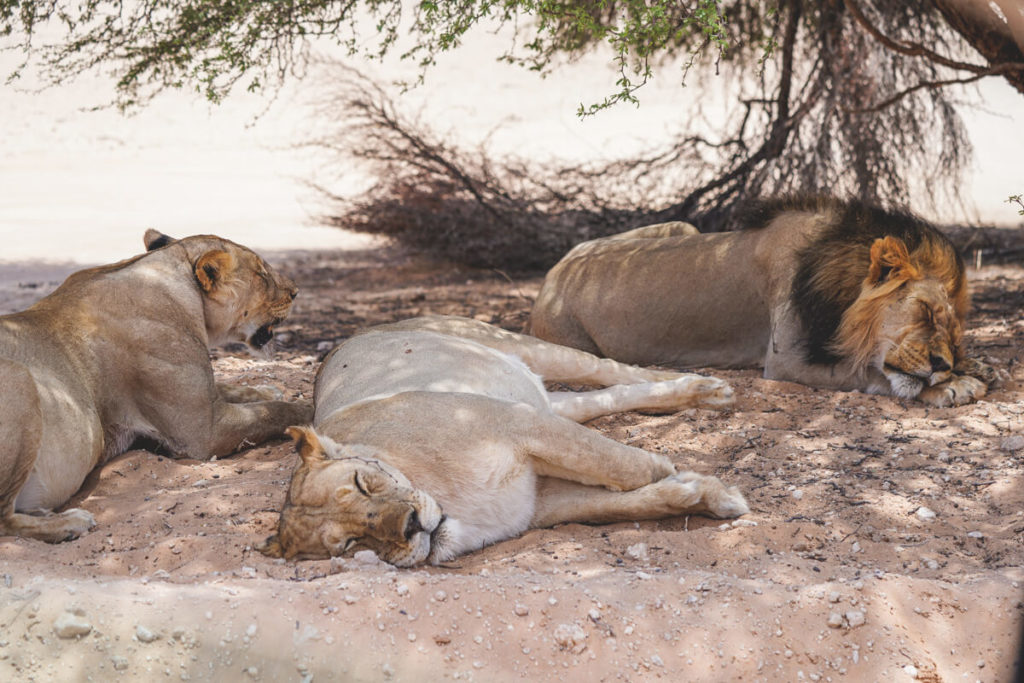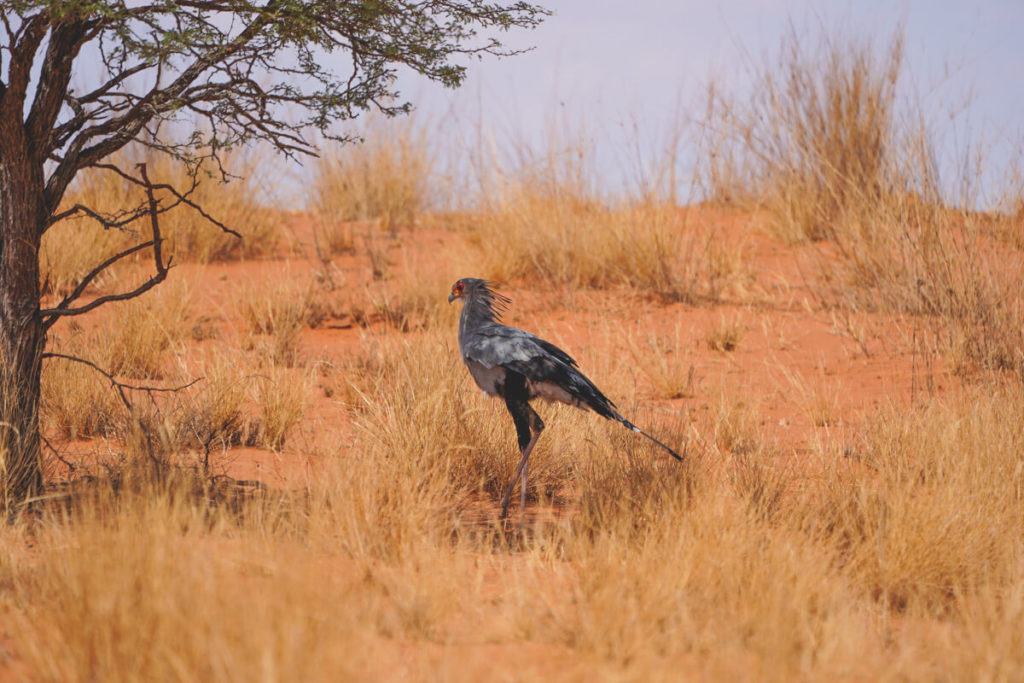We’ve already seen and experienced quite a bit in South Africa, but the trip to the Northern Cape and the Kgalagadi Transfrontier National Park was definitely one of our absolute highlights. We were far away from everything, somewhere in the middle of nowhere. For the first time, we felt a touch of the “real” Africa, as you imagine it.
Of course, it may be “just” another national park, but the landscapes, the isolation, and the wildlife enchanted us from the very first moment. The red sand of the Kalahari Desert, the dry riverbeds, the sandy dunes, and the endless expanses… simply amazing!
Not only the landscapes, but also the wild animals made our stay unique. In addition to lions, giraffes, wildebeests, jackals, hyenas, and foxes, we also discovered numerous antelope and bird species. Today we would like to take you to the park and tell you everything you need to know about it in this article. Enjoy browsing!
What else you should know
- Best time to travel to South Africa
- Currency of South Africa
- South Africa Entry & Visa
- Round trip with a rental carcarcar
- The top Cape Town highlights
- Northern Cape Round Trip
- Kruger National Park
- Panorama Route South Africa
- The beautiful Winelands
- Magical Garden Route
- What else you should know
- General information about the park
- Arrival and entry
- Prices & Opening Hours
- Important Tips Before Your Trip
- 4WD or Car?
- Accommodation in the Park
- Accommodation Outside the Park
- Book a Guided Safari
- Self-Drive through the Park
- Best Time to Visit the Park
- Our Conclusion on the Kgalagadi Transfrontier National Park
- Packing List for the Trip
- Our Video Diary
- Impressions from the Park
General Information about the Park
The Kgalagadi Transfrontier National Park is a cross-border protected area in the Kalahari Desert, created by the merger of the Kalahari Gemsbok National Park in South Africa and the Gemsbok National Park in Botswana. The park is still very pristine, without the frills of the other parks.
There are a few toilet cabins, a few benches for picnics, and a few camps for overnight stays. There aren’t many fenced areas in the park, which makes the whole experience a bit more exciting. It’s practically “use the toilet at your own risk.”
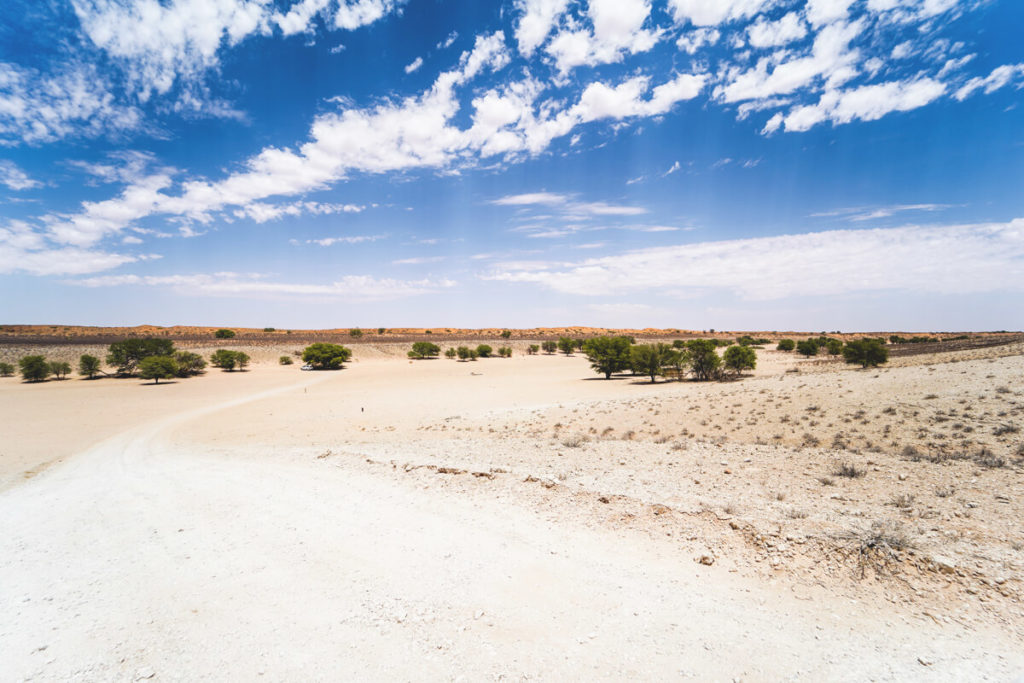
The vegetation ranges from red sand dunes with small bushes to dry savannah with dried-up riverbeds and the occasional tree. The entire park is almost twice as large as the Kruger National Park, so you’ll have to be prepared for really long stretches, for example, if you want to drive from one gate to another.
There are only a few dirt roads leading through the park and along the riverbeds. We saw most of the animals in the riverbeds, either under the trees or at the waterholes. The name Kalahari (derived from Kgalagadi) means something like “the great thirsty land.”
Arrival and Entry
The Kgalagadi Transfrontier National Park in South Africa is located in the very north of the country, on the borders with Namibia and Botswana. From Upington, it’s 250 kilometers to the main gate, Twee Rivieren. Upington also has an airport, from where you can fly to Cape Town and Johannesburg, among others.
During our round trip, we arrived from Augrabies Falls National Park and, with a short break in Upington, were on the road for just under 4.5 hours. We didn’t really see much along the way, maybe a sheep or a goat on the side of the road.
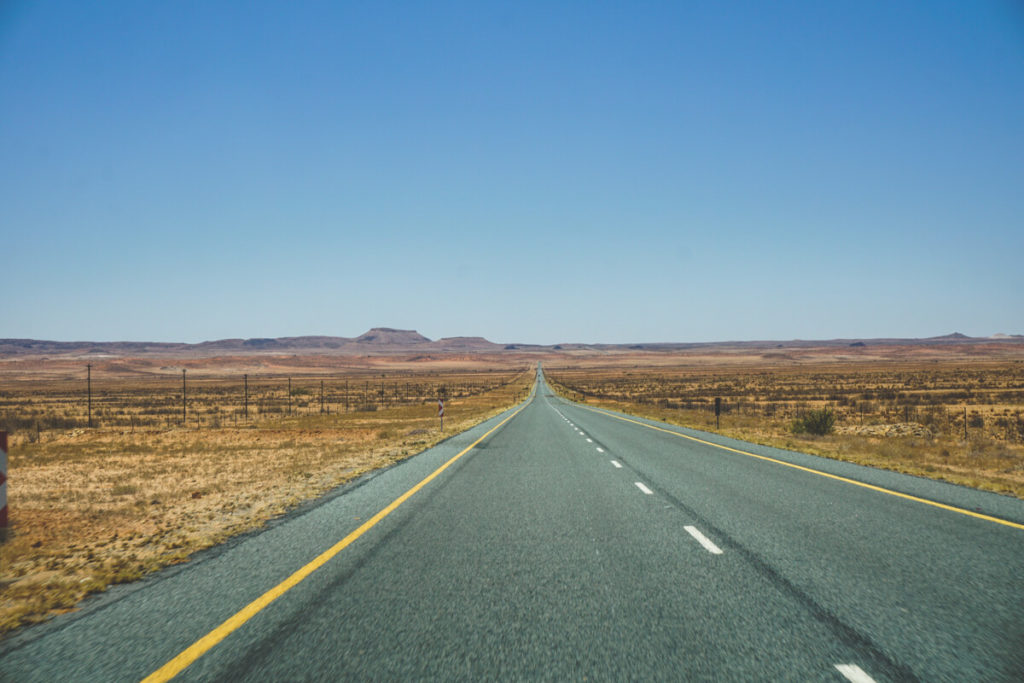
Although the park spans borders, there are generally no border controls for you. However, if you want to leave the park through a different gate and thus another country (only possible after staying 2 nights or more in the park), entry and exit formalities with stamps are required.
You can sort this out directly at immigration in Twee Rivieren. However, you can drive freely anywhere within the park. So you’ll definitely be able to set foot on “Botswanan soil” here. Cool, right?
Prices & Opening Hours
- Address: Private bag X5890, Upington, 8800, South Africa
- Opening Hours: Main Gate Twee Rivieren 5:30 AM – 7:30 PM (times vary depending on the season)
- Entrance Fees: Adults R512 (approx. €24), Children R256 (approx. €12)
If you stay overnight in the park, you pay this fee per night. In other words, if you stay two nights in accommodation within the park, you can drive through the park on three days. As a day visitor, you must leave the park before closing time on the same day.
You will receive a permit, which you will then show at the gate upon entry and exit. You can pay there with credit card (provided there is no power outage). With the Wild Card, you no longer pay the entrance fee, but you still need your permit.
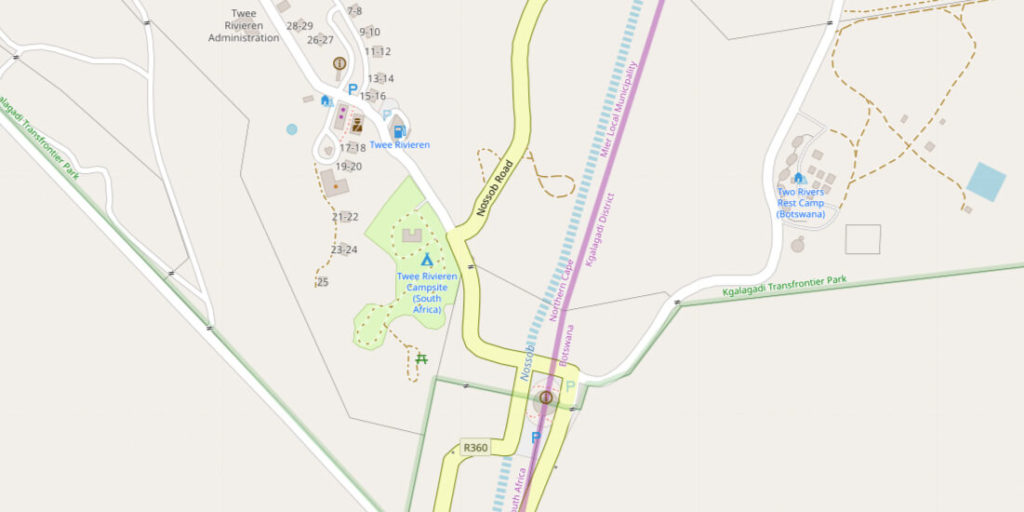
Important tips before your trip
At the Twee Rivieren Gate, you have the opportunity to fill up your car again. And you should definitely do so. Also, let some air out of your tires (1.6 bar) so you can make good progress on the sandy tracks. There’s a sign at the gas station with the most important information. The gas station accepts credit cards unless there’s another power outage. In that case, you’ll only be able to pay with cash.
There’s an ATM in the small shop next to the restaurant, but it was permanently broken. It’s best to get some cash beforehand in a larger town. At the Main Camp in Twee Rivieren (which is called “Two Rivers,” by the way), there’s a restaurant, a small shop, and the Twee Rivieren Rest Camp with a pool, cottages, and tent pitches.
In the shop, you can purchase the “Official Information Guide,” which we also recommend. This booklet contains all the information you need about the park, its flora and fauna. It also includes a well-structured map of the area with all the trails, mileage information, camps, picnic areas, and waterholes.
There are no shops or restaurants in the park itself. Before you set off, make sure you stock up on enough drinks and provisions for the day. As already mentioned, Twee Rivieren Camp has a restaurant and a small shop with the essentials. You won’t find a really large supermarket until Upington, 250 kilometers away. The Kgalagadi Lodge also has a small shop where you can buy the essentials.
4WD or car?
You don’t need a 4WD for this park. The sandy tracks can be driven on with a regular car, but a 4WD is much more comfortable. It does get a bit bumpy and rocky here and there. However, a 4WD is required for the Bitterpan and Gharagab camps.
The roads sometimes drag on like chewing gum; the speed limit in the park is 50 km/h and in the remaining camps, 20 km/h. Always stay on these roads and obey the speed limits.

You won’t find a gas station in the park itself; on the South African side, there are only gas stations at the Main Gate in Twee Rivieren (and in Nossob and Mata-Mata). It’s open from 7 a.m. until sunset during the week and closes between 1 p.m. and 2 p.m. on weekends.
It’s best to fill up your tank before setting off through the park. If you have a breakdown in the park, you must stay in your car until help arrives. Driving after dark is also strictly prohibited in the park! Therefore, most national parks close between 6 and 7 p.m.
Accommodation in the Park
You have the option of staying overnight in the park or outside the park. The Kgalagadi Transfrontier National Park has the larger rest camps Twee Rivieren, Mata-Mata, and Nossob, which are equipped with chalets, pitches, and fences. But be careful: There is only a restaurant in Twee Rivieren.
The so-called wilderness camps Bitterpan, Grootkolk, Kieliekrankie, Urikaruus, Gharagab, and the Kalahari Tented Camp are not fenced and have small cottages and pitches. You can only book accommodations through the SANParks website.
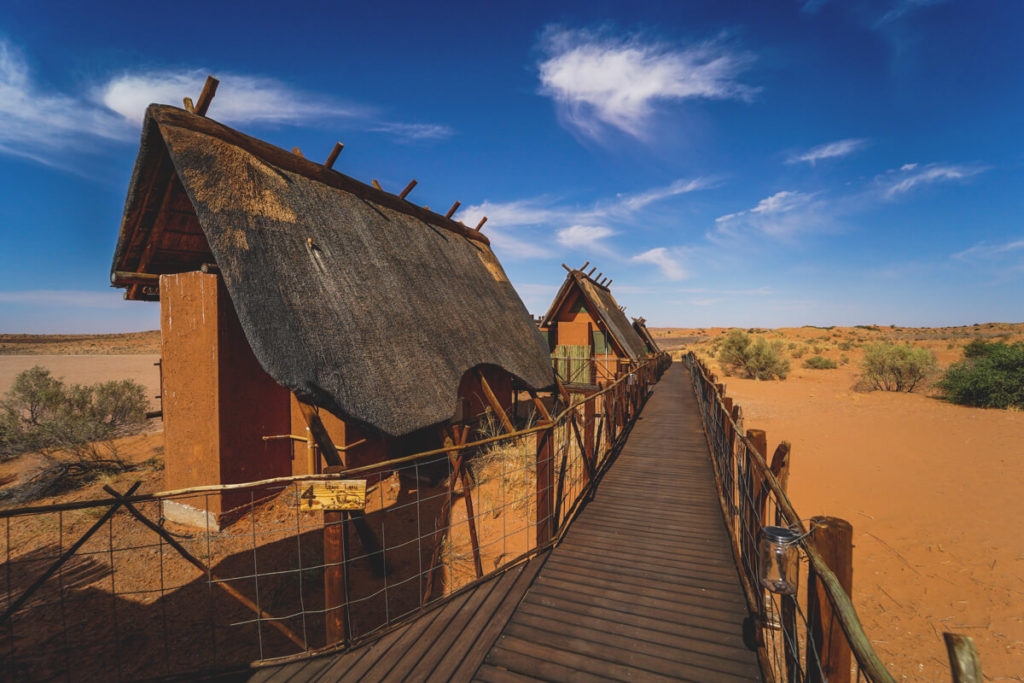
If you want to experience something truly special, we can recommend an overnight stay at the unique and exclusive !Xaus Lodge*. It is secluded in the dunes of the Kalahari Desert and awaits you with a spectacular location, beautiful chalets, and unforgettable activities.
We spent two nights there, learned a lot about the flora and fauna, and enjoyed our time there to the fullest. It’s not exactly cheap, but such exclusive experiences come at a price. Our detailed article on this can be found here: The !Xaus Lodge in the Kgalagadi Transfrontier National Park.
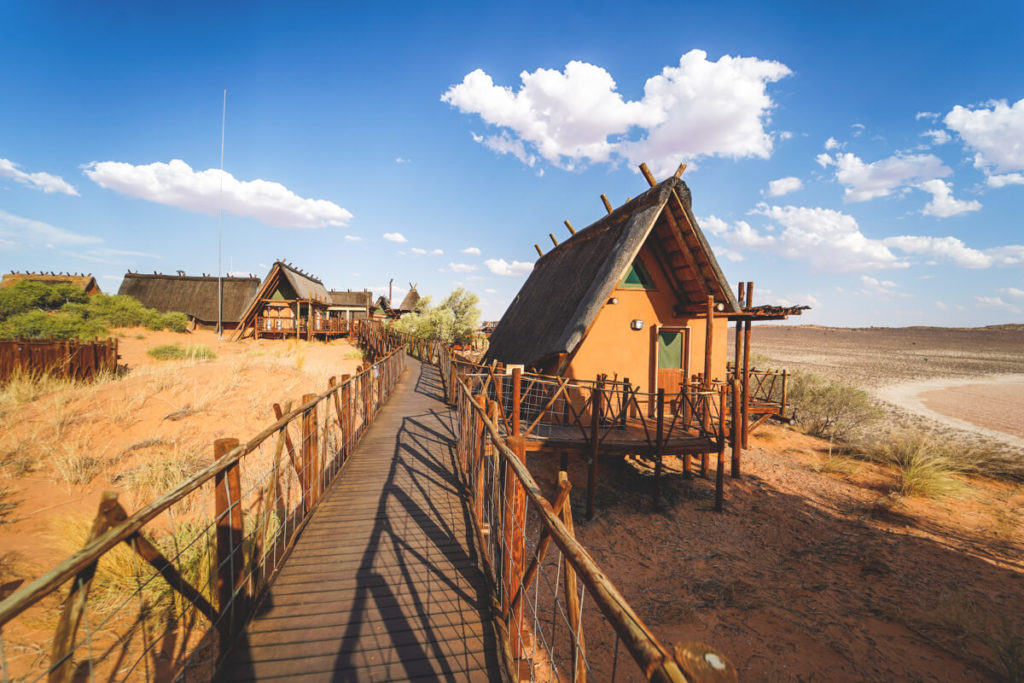
Accommodation outside the park
We spent a few nights outside the park at the Kgalagadi Lodge*. This complex is just 6 kilometers from the Twee Rivieren Main Gate and offers great chalets, a pool, a shop, and a restaurant. If the accommodations in the park are already fully booked, you can try your luck here. We can 100% recommend this accommodation; the staff, the food, and the chalets themselves are truly fantastic. Prices start at €60.
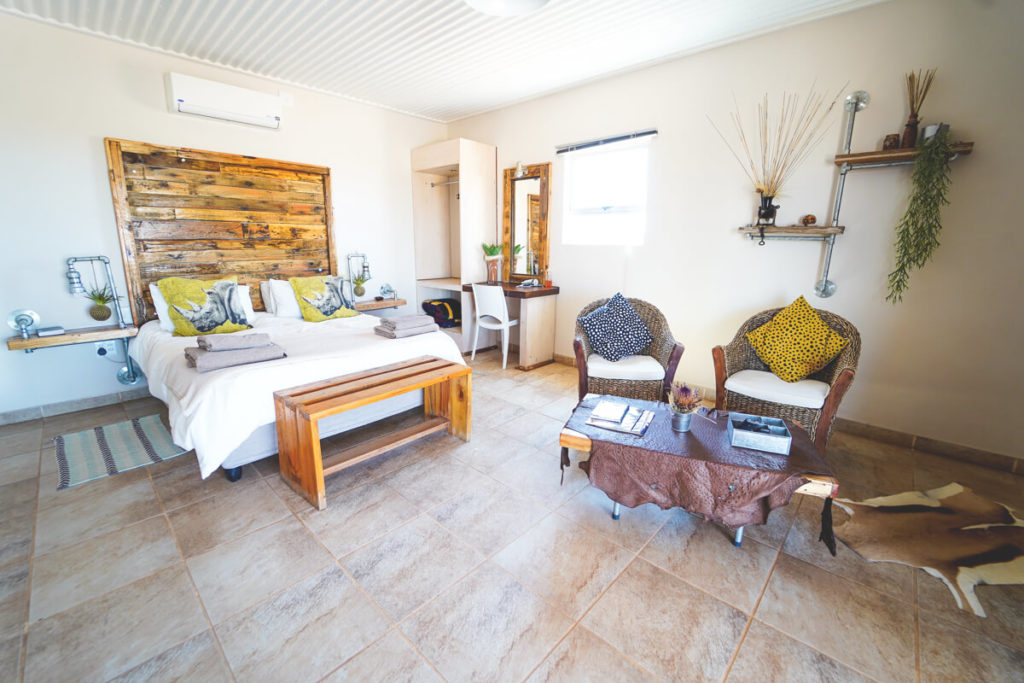
Alternatively, you’ll only find accommodations significantly farther from the park. In the following table, we’ve listed all the accommodations for you and noted how far they are from the Main Gate. We recommend staying overnight either in the park itself or at the Kgalagadi Lodge. Namibia also features the beautiful Torgos Lodge, just 7 kilometers from the Mata-Mata Gate. There isn’t much choice outside the park.
Book a guided safari
We asked the staff at the main gate for information. They gave us a sheet with the possible tours that can be booked on site. There are morning drives, day drives, bush walks, and sunset drives, which are offered from Twee Rivieren, Nossob, Mata-Matt, and the Kalahari Tented Camp.
This makes sense if you’re staying overnight in the park and want to experience a guided tour. A minimum of two people are required for the tours. The drives don’t take place every day; it always depends on the available staff. It’s best to ask directly upon arrival at Twee Rivieren Camp. Prices: from approximately €20 per person.
Self-drive through the park
If you’ve decided to drive through the park yourself, we recommend the routes along the Nossob and Auob riverbeds. Numerous watering holes are lined up here, where animals can almost always be seen. The Visitors Map (available here as a PDF) shows all route information, waterholes, picnic areas, toilets, and camp sites. Take your time; you won’t make much progress in the park, as the speed limit is 50 km/h.
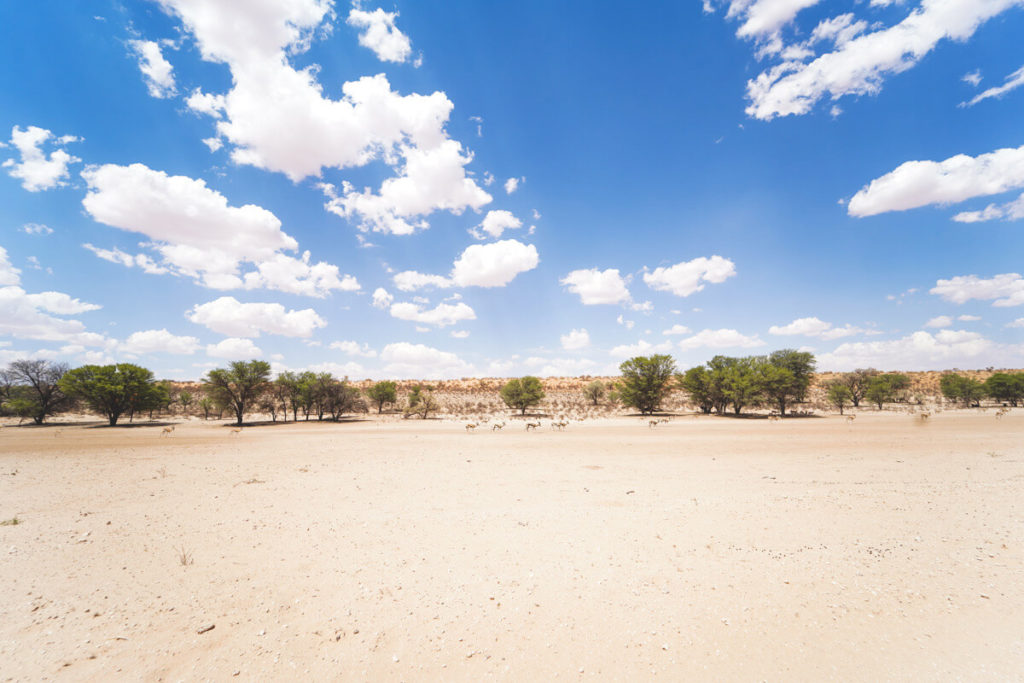
On our first day, it took us about 2.5 hours to cover the first 60 kilometers because we seemed to have to stop every 100 meters. Here a lion, there a giraffe. Here an oryx, there a jackal. But it was incredibly fun to drive through the park, especially because there weren’t as many tourists as in other well-known parks (Addo, Kruger). We rarely encountered another vehicle. Restrooms are available at the picnic areas, which are located at relatively regular intervals throughout the park.
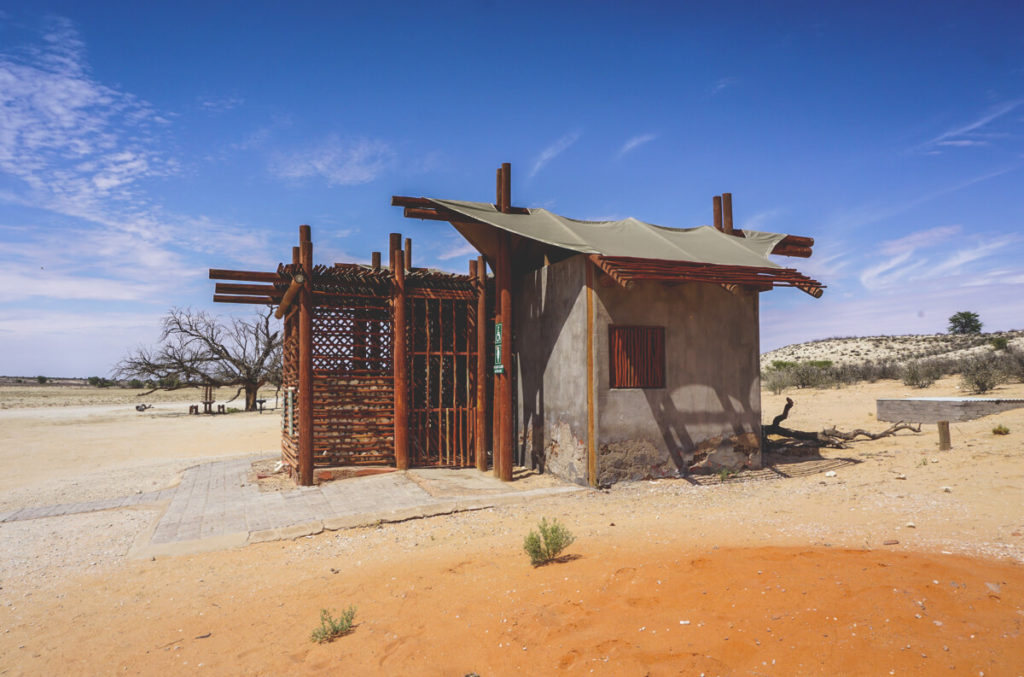
Driving was really good with our large SUV; the boys enjoyed cruising along the sandy tracks. It’s also worth getting a good pair of binoculars to observe animals from far away. This usually worked really well with our camera’s zoom lens (100mm-400mm).
We always had enough water in the trunk for our drives, snacks for in between, and charged batteries for our cameras. Luckily, our air conditioning in the car worked perfectly, which was really important when the outside temperature was 40°C.
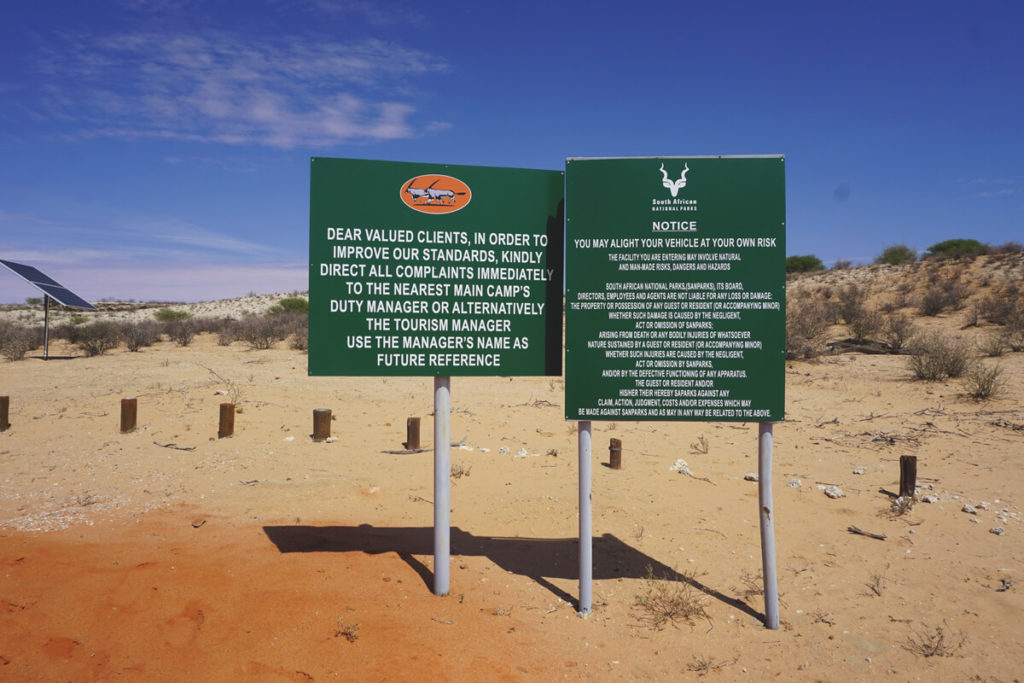
Route and time information from the brochure:
Best time to visit the park
Here in the Northern Cape, it is really warm to very hot all year round. Even the ground can heat up to over 70°C in the summer, crazy, right? According to climate tables, the best time to visit the park is March, April, and May. Then the temperatures are pleasant, the sun is not as intense, and the rainy season is already over. While it can get quite cold at night, it’s no problem in a warm bed.
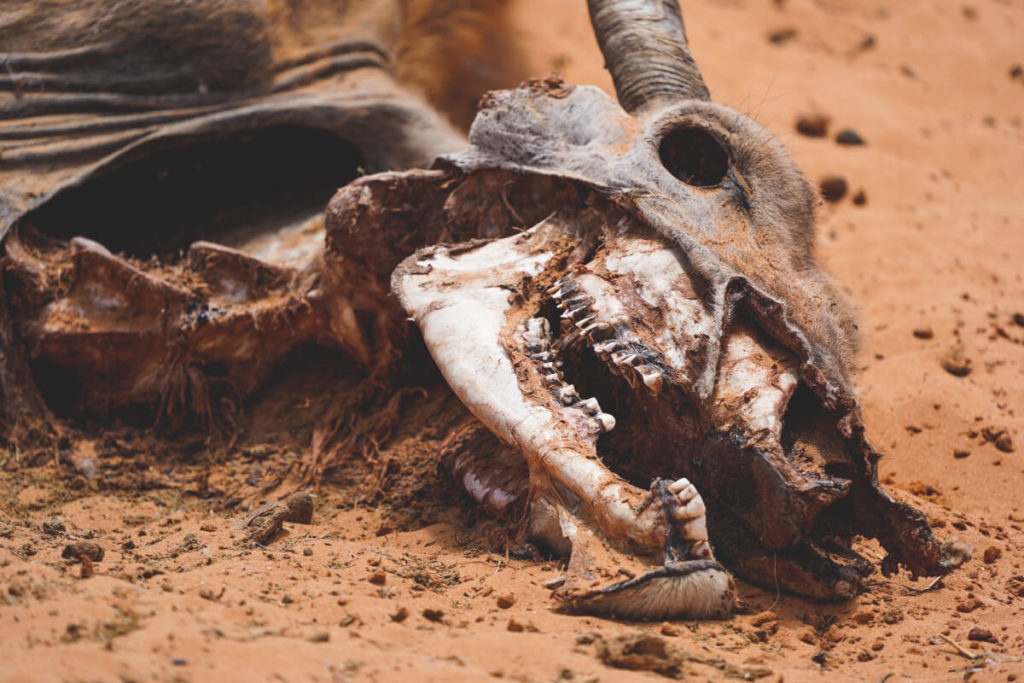
The months from June to September are also still “pleasant” in terms of temperatures. We were in the park in November, and it was incredibly hot. Without the air conditioning in the car, we would have surely melted. In general, it is very hot in the Kgalagadi Transfrontier National Park from November to April, with temperatures around 35°C to 40°C. Most visitors arrive in the park between June and October, and accommodation becomes scarce then.
Our conclusion about the Kgalagadi Transfrontier National Park
For us, the days in the Kgalagadi Transfrontier National Park were an absolute highlight of our tour through the Northern Cape. We love the endless expanses, desert landscapes, and savannahs anyway. We particularly enjoyed the isolation and this beautiful “original Africa.” We were lucky because there were only a few tourists in the park. This meant we could enjoy the many moments all to ourselves, without dozens of cars parked around us. We highly recommend a trip to this park and would return there again and again ourselves.
Packing list for the trip
If you decide to travel to the north of South Africa, you should bring a few essentials. Sunscreen* is very important given the hot temperatures and very intense sun. Even if it’s overcast/cloudy, you should always protect your skin with it.
You should also always pack binoculars*. This allows you to observe the animals from a distance from the car. For that real African feeling, you can get a ranger hat* (like I did). Not only does it look cool, it also protects your head from the heat and sun.
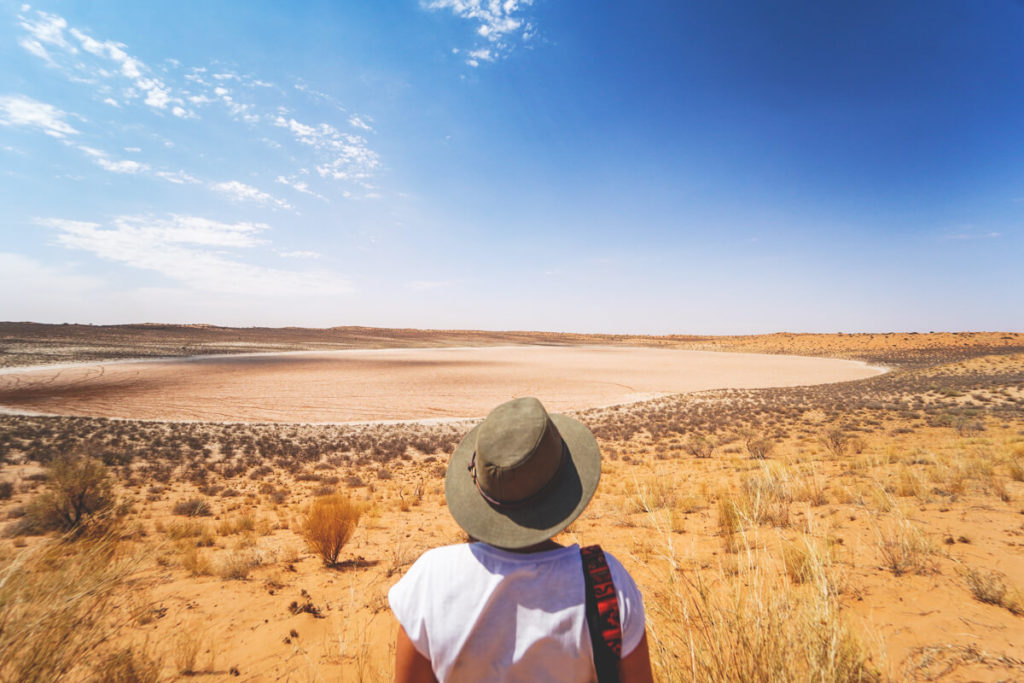
We always carry a zoom lens with us for every safari. This time it was a Sony lens with a 100-400 mm* focal length. We usually rent specialized equipment at a reasonable price, as purchasing it is often not worth it. If you want to pimp up your camera a bit, you can get one of our really cool camera straps*. Your packing list should also include long, thin trousers, especially if you’re planning a bush walk (like we did at !Xaus Lodge). Drones are prohibited, by the way!
Also don’t forget: power adapter*, power bank*, pocket knife*, Southern Africa wildlife guide*, field guide (tracking)*, flashlight*…
Our video diary
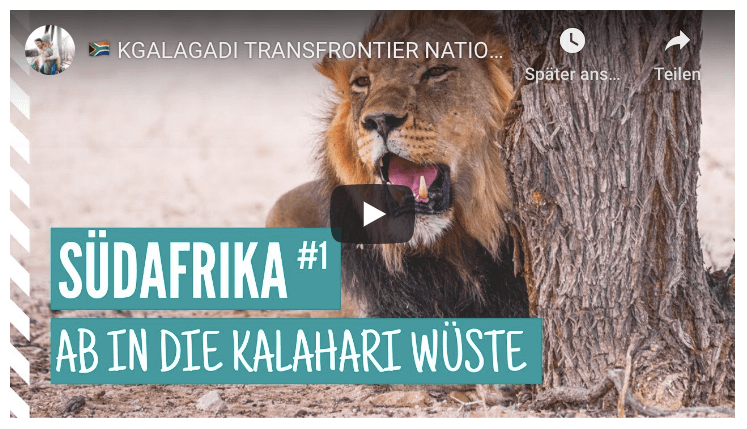
Impressions from the Park
